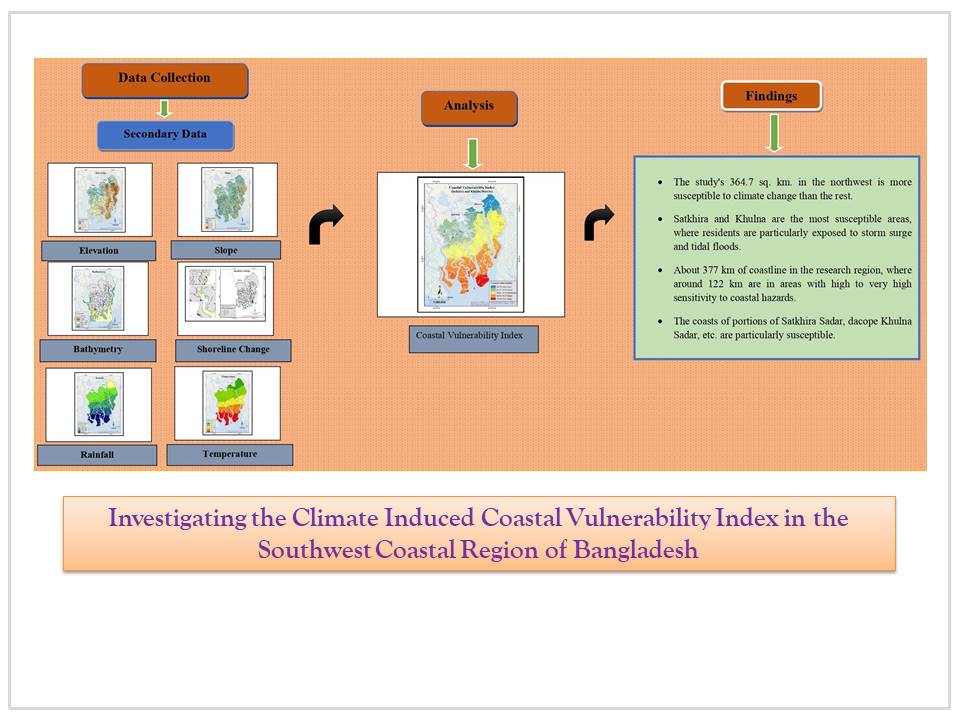Title
Investigating the Climate Induced Coastal Vulnerability Index in the Southwest Coastal Region of Bangladesh
Authors
Sk Taufiqul Islam,a Md. Azizul Batenb and Towfiqul Islam Khan*c
aPost graduate research student, Dept. of Geography and Environment, Shahjalal University of Science & Technology, Shlhet-3114, Bangladesh.
bProfessor, Dept. of Statistics, Shahjalal University of Science & Technology, Shlhet-3114, Bangladesh.
cAssistant Professor, Dept. of Geography and Environment, Shahjalal University of Science & Technology, Shlhet-3114, Bangladesh.
*Corresponding author E-mail address: khan-gee@sust.edu (Towfiqul Islam Khan)
Article History
Publication details: Received: 20th March 2023; Revised: 23rd April 2023; Accepted: 23rd April 2023; Published: 28th April 2023
Cite this article
Taufiqul Islam Sk.; Azizul Baten Md.; Islam Khan T. Investigating the Climate Induced Coastal Vulnerability Index in the Southwest Coastal Region of Bangladesh. Green Rep., 2023, 4(10), 23-30.

Abstract
The coastal zone of Bangladesh is characterized by developing shallow deltas subject to very high tides and frequent cyclones from the Bay of Bengal. People in Bangladesh's coastal areas are becoming more vulnerable to the threat of climate change, resulting in relatively higher levels of poverty than elsewhere in the country. Potential impacts of sea-level rise in coastal areas include coastal erosion, saltwater intrusion, flooding of wetlands and estuaries, and threats to cultural and historical resources and infrastructure. The main objective of this study is to predict coastal vulnerability in the south-western coastal zone of Bangladesh to assess coastal exposure and vulnerability to natural hazards. Six geophysical and climatic parameters, i.e., variations in elevation, slope, water depth, temperature, precipitation and coastline were considered to simulate the model. All parameters were pre-processed, analyzed, normalized (rescaled) and ranked on a low to high vulnerability range from 1 to 5 to build a Coastal Vulnerability Index (CVI) model. Findings indicate that the north-western part of the study area (Satkhira district) is highly vulnerable to climate change. Densely populated areas are at risk from climate change, with an area of approximately 434.88 square kilometres highly vulnerable to climate change challenges. Most of the region is moderately exposed to natural disasters. This research approach can be applied on a regional scale to other coastal areas to easily identify climate impacts on coastal communities for future development and planning by scientists, researchers and policy makers.
Keywords
Climate Change; Vulnerability; Coastal Zone; GIS; Coastal Vulnerability Index